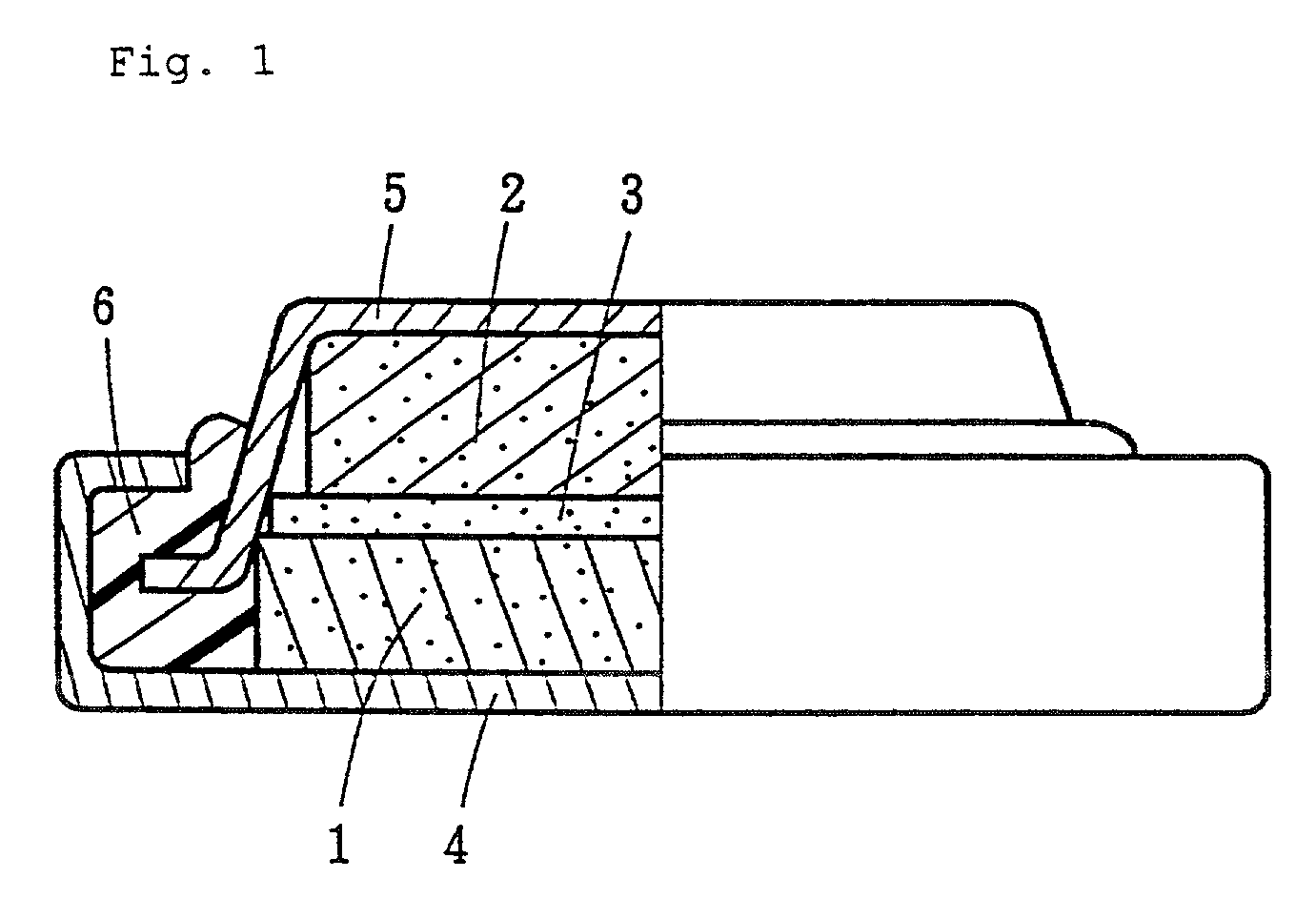Nonaqueous secondary battery with lithium titanium cathode
a secondary battery and lithium titanium cathode technology, applied in the field of lithium titanium cathode, can solve the problems of short circuit in the cell, primary cells suffer from problems, lithium ions in an electrolyte tend to precipitate, etc., and achieve the effect of high capacity
- Summary
- Abstract
- Description
- Claims
- Application Information
AI Technical Summary
Benefits of technology
Problems solved by technology
Method used
Image
Examples
example 1
[0033] Anatase titanium oxide (2 moles) and lithium hydroxide (1 mole) were mixed and calcined using an electric furnace in air at 800.degree. C. for 8 hours, and a lithium titanate was obtained. The composition of this lithium titanate was analyzed by atomic absorption analysis, and found to be Li.sub.1.33Ti.sub.1.67O.sub.4.
[0034] The obtained lithium titanate (100 wt. parts), carbon black (5 wt. parts) and graphite (5 wt. parts) as conducting aids, and polytetrafluoroethylene (5 wt. parts) as a binder were mixed in isopropanol to prepare a positive electrode mixture. After evaporating off the solvent, the positive electrode mixture was molded in the form of a pellet having a diameter of 6.0 mm and a thickness of 0.5 mm. The pellet was dried and dehydrated with a far-infrared drier at 250.degree. C. for 30 minutes to form a positive electrode.
[0035] Separately, synthetic graphite (90 wt. parts) and polyvinylidene fluoride (10 wt. parts) as a binder were mixed in N-methylpyrrolidone...
example 2
[0043] A lithium secondary cell was produced in the same manner as in Example 1 except that an electrolytic solution, which had been prepared by dissolving LiPF.sub.6 in place of LiN(CF.sub.3SO.sub.2).sub.2 in a mixed solvent of ethylene carbonate and diethyl carbonate in a volume ratio of 1:1 at a concentration of 1.0 mole / 1, was used.
PUM
| Property | Measurement | Unit |
|---|---|---|
| voltage | aaaaa | aaaaa |
| temperature | aaaaa | aaaaa |
| temperature | aaaaa | aaaaa |
Abstract
Description
Claims
Application Information
 Login to View More
Login to View More - R&D
- Intellectual Property
- Life Sciences
- Materials
- Tech Scout
- Unparalleled Data Quality
- Higher Quality Content
- 60% Fewer Hallucinations
Browse by: Latest US Patents, China's latest patents, Technical Efficacy Thesaurus, Application Domain, Technology Topic, Popular Technical Reports.
© 2025 PatSnap. All rights reserved.Legal|Privacy policy|Modern Slavery Act Transparency Statement|Sitemap|About US| Contact US: help@patsnap.com



